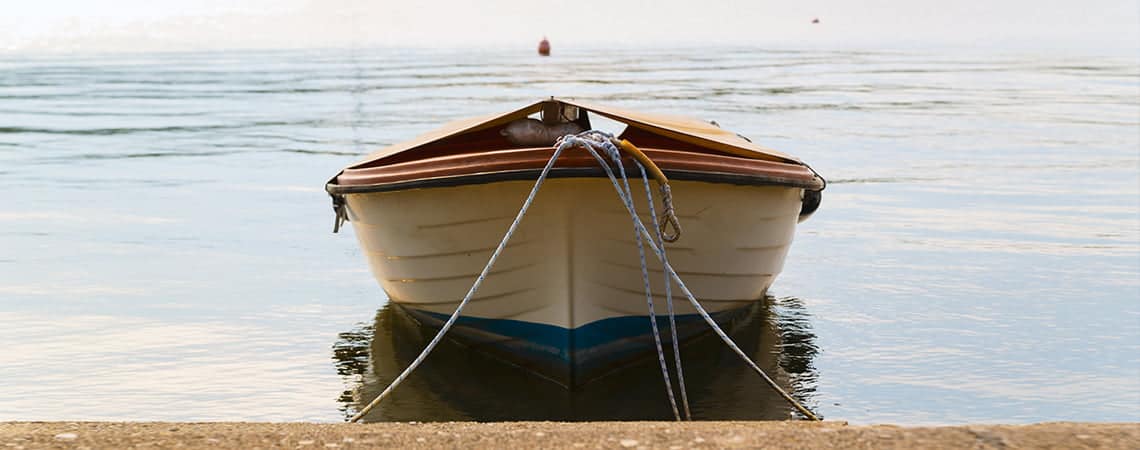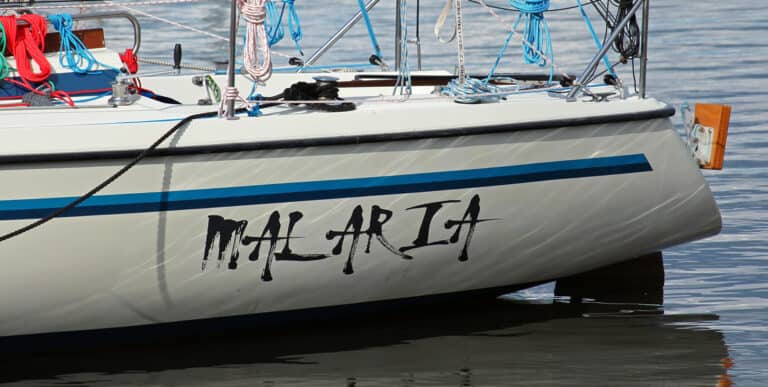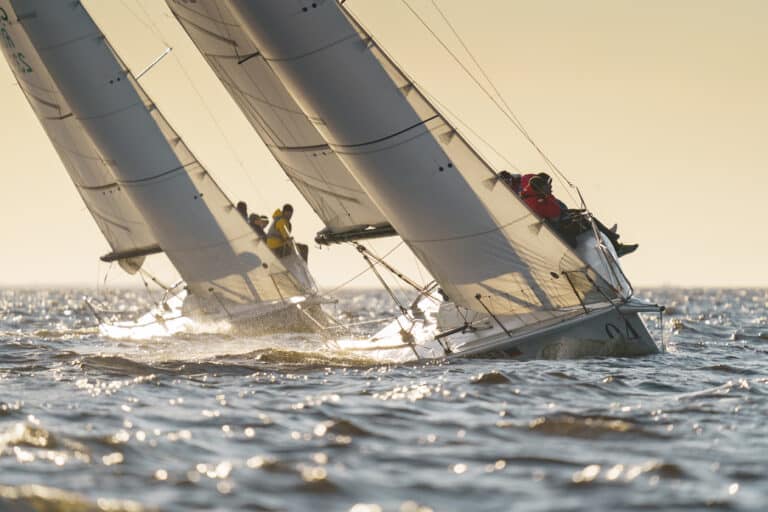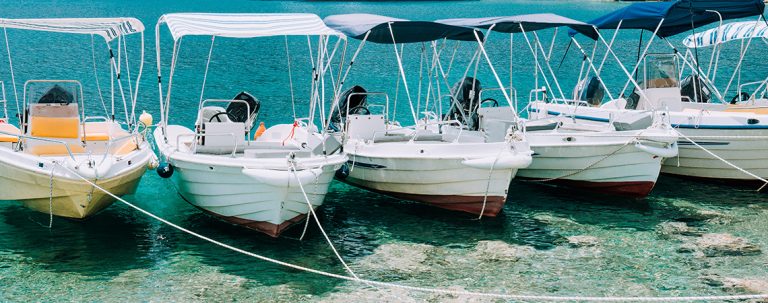The goal of today’s guide is to answer the following question – what is the best way to avoid overloading your boat?
Short answer – do not exceed the limits indicated on your boat’s capacity plate or in its manual. If you follow this tip, you will avoid excessive stress on your boat, and your vessel will stay easy to control throughout the journey.
What about the long answer? Well, things are a little more difficult. Nearly 2,000 words difficult, in fact.
DesperateSailors have all the crucial information and answers to your questions below. Read on to find out how to stay within limits to ensure a safe and pleasant journey!
What is a Capacity Plate and Where is it Located?
Before we move to the meat of this post – how to avoid overloading your boat – we should start with a few crucial basics.
We’ve mentioned a certain capacity plate in our short answer. What is a capacity plate and how does it pertain to overloading boats?
A capacity plate is a plate containing info such as:
- Maximum number of passengers.
- Maximum total weight of passengers.
- Maximum combined weight of passengers, gear, and motors.
- Maximum motor horsepower.
Note that usually, these specs apply to good or moderate weather conditions.
The contents of the capacity plate may differ based on the type of the boat (more on that below).
Boat capacity plates are usually located near the helm or on the transom of the boat. And typically, the information contained in capacity plates can also be found in the boat’s manual.
Single-hull boats that are less than 20 feet long are required by federal law to have a capacity plate. Sailboats and PWCs (personal watercrafts) are not required to have a capacity plate, however.
Exceeding the weight limit on a boat is a violation in many states, though in some areas, you will not even get a ticket for it.
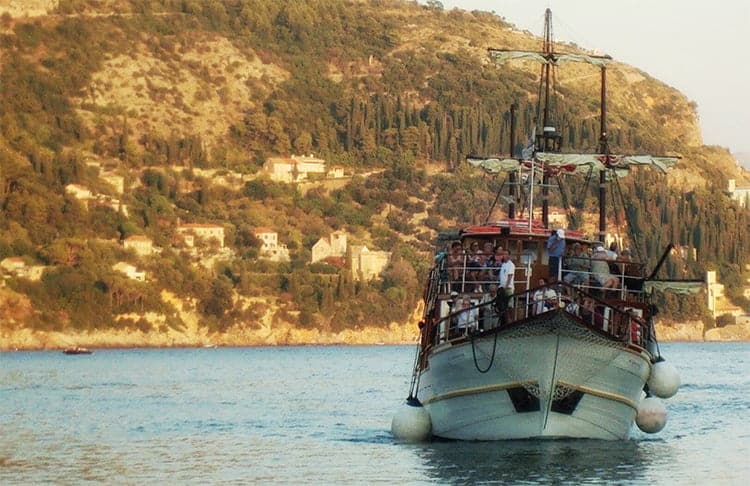
What Does a Capacity Plate Indicate?
The information contained in a boat capacity plate may differ based on the type of boat. Depending on boat type, here is what your capacity plate may have:
- Boats powered by outboards. In these, the capacity plate indicates the maximum passenger capacity in pounds (sometimes called maximum gross load) and/or persons, maximum weight capacity (for passengers, motor, and gear) in pounds, and maximum horsepower.
- Inboard- and stern drive-powered boards. The capacity plate indicates the maximum passenger capacity in pounds and/or persons, as well as max weight capacity (persons + gear) in pounds.
- Manually propelled boats. In these boats, the capacity plate indicates the same info as in the previous category – maximum passenger capacity in pounds (and/or persons) and max weight capacity for passengers + gear.
And here are the definitions of the info contained in a capacity plate:
- Maximum passengers. This is the maximum number of adults that a vessel can carry safely. Typically, boat manufacturers assume an adult weight of 150 pounds when estimating the max number of passengers.
- Maximum gross load. The maximum gross load is the total weight of all passengers. Arguably, the maximum gross load is more useful than the max passenger number limit because it only takes into account raw weight. If most of your passengers are not 150 pounds, then the maximum gross load would allow you to more easily determine how many passengers you should have.
- Persons, motor, gear. This spec is the maximum allowed weight of everything you can have onboard.
- Maximum horsepower. This spec shows the max horsepower that your boat’s motor should have. You should not overpower your boat because it may start sitting too low in the stern. Aside from that, an overpowered boat is difficult to control.
Boats that have passed NMMA (National Marine Manufacturers Association) certification will have capacity plates containing more info, such as the certification of navigation lights, maneuverability, and more.
Don’t have a Capacity Plate? Use the Boat Capacity Formula!
If your boat doesn’t have a capacity plate, then you can still find out the passenger capacity using this formula:
Number of passengers = boat length x boat width / 15
Here, boat length and width should be in feet.
You may calculate the capacity manually, or you may use an online boat capacity calculator (like this one from BOATERexam.com).
As a simple example, let’s calculate the passenger capacity of a boat that is 20 feet long and 5 feet wide. Multiplying 5 by 20, we get 100 square feet. Dividing 100 by 15, we get 6.667. You should then round the result to the nearest integer, which is 7 in this case.

Typically, it is recommended counting adults as 1 passenger and children as 0.5 passengers. So with our example, you could transport 7 adults, 6 adults plus 2 children, and so on.
Keep in mind that this formula assumes that the average weight of passengers is 150 pounds. If your passengers are heavier than 150 pounds, then you will have to reduce the number of passengers.
Some boaters also recommend adjusting the divisor (the number by which the boat area is divided) based on water conditions. For calm water, you may divide the area by 14. If you will be cruising fast or if there is a mild wind, then divide by 16.
Keep in mind that calculating passenger capacity this way will not give you super-accurate results. You should have a look at your boat’s manual to find the accurate specs. Only use the boat capacity formula if you have to quickly determine how many people you can take on board.
What is the Best Way to Avoid Overloading Your Boat?
Now, we’d like to introduce you to a few boat capacity rules that would help you avoid overloading your vessel.
Stay Below Your Boat’s Max Weight Capacity
First and foremost, you should stay below the weight capacity printed on your boat’s capacity plate. Simple as that.
Now, you will have to do some inventory management to stay within limits. If you have a smaller boat with low weight capacity, then you will need to carefully think about what to take with you on the journey.
To stay below your boat’s max weight capacity, follow these three tips:
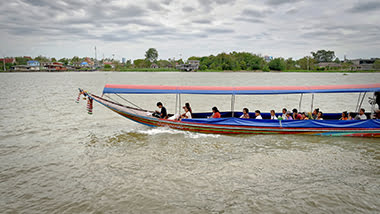
- Determine what is important for your journey. You should NOT attempt to stay within limits at the expense of essential gear. With that in mind, make a checklist of all must-have items for your journey. Determine how heavy all your essentials will be too.
- Leave out fancy items and gear. Unless you have a lot of capacity headroom, do not take any fancy items or unnecessary stuff onboard. If an item is not crucial to your journey, then you may leave it out.
- Plan ahead. If you are intending to take more cargo on board, then plan your journey accordingly and make sure that you have enough headroom for a safe trip. Not only that, but if the weather is likely to get worse while you are on the water, try to stay light.
Do Not Take Extra Passengers on Board
This point ties back to the first one, but we’d like to mention it separately.
Do not take extra passengers with you on board. Always take into account the limits indicated in your capacity plate. If there is no capacity plate, read the boat’s manual – you should find all the info there. You may make use of the boat capacity formula too, but remember that it’s not very accurate.
Distribute Weight Evenly
Distributing weight evenly is crucial to avoid any lean. Leaning may cause increased stress on your boat’s structure, cause seasickness in your passengers, or even throw gear or people overboard.
Boat manufacturers do everything they can to make boat balancing easy. Most importantly, they strategically arrange seating and cargo storage areas.
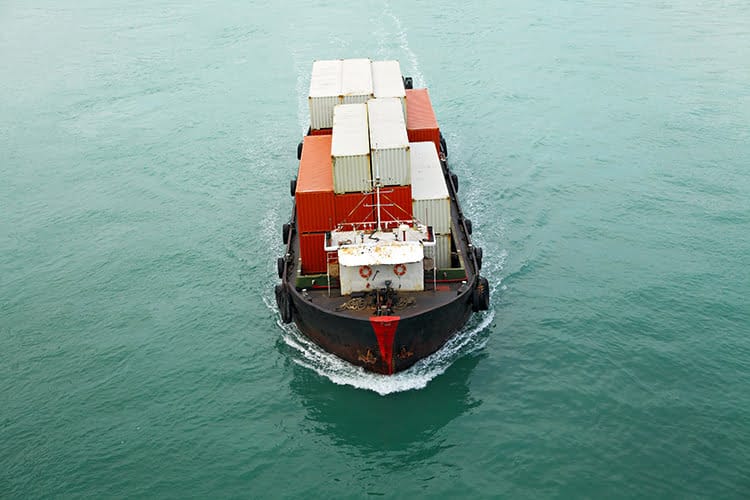
However, even if you follow manufacturer recommendations, you will have to actively combat lean.
We have a separate guide on how to reduce boat lean, so check it out for some more in-depth tips.
One key takeaway from our guide – you cannot eliminate lean once and for all. As weather conditions change and as passengers/gear leave your vessel or come on board, the amount of lean in your boat will change too.
With that, the best thing you could do is adapt your boat to the changing conditions to eliminate lean.
Avoid Transporting Heavy Loads in Bad Weather
As mentioned earlier, the numbers in the capacity plate apply to good or moderate weather conditions. If the water is choppy, you should stay as light as you can. When the waves are high, a heavy boat is more difficult to control, and heavy gear moving around may cause abrupt changes in weight distribution too.
This is why it’s crucial to plan ahead with the weather in mind.
Do Not Overpower Your Boat
Although motor power is not related to weight and passenger capacity, we would like to touch upon it too since max horsepower is one of the things indicated in boat capacity plates.
The horsepower limits are there for a reason. If you ignore them and mount a more powerful motor to your boat than you should, here’s what may happen:
- You may get fined.
- A boat not designed for high horsepower will become difficult to control if you push the motor to its limits.
- An overpowered motor is heavier than what the boat is designed for. Due to this, an overpowered motor may lower your boat in the stern, increasing the risk of flooding.
High-speed boats are fun, but please do not overpower your boat. If you want to cruise fast, then do yourself a favor and buy a boat that is designed for it.
Frequently Asked Questions
What does a Boat Capacity Plate Indicate?
Generally, boat capacity plates contain the following information:
– Maximum passenger capacity in persons and/or pounds.
– Maximum weight of the motor + gear + passengers.
– Maximum horsepower capacity.
What Happens if You Exceed the Weight Limit on a Boat?
If you exceed the capacities indicated in your boat’s capacity plate, your vessel is more likely to capsize. In bad weather and choppy waters, capsizing becomes even more likely.
You may also face issues with the law if you are caught exceeding your boat’s capacity.
Where is the Capacity Plate located on a Boat?
The capacity plate is typically found next to the helm station or inside the transom.
What Causes Boats to Capsize?
Capsizing most commonly happens due to:
– Boat overloading.
– Uneven weight distribution.
– Tall waves or shape turns.
– Bad weather conditions.
Can I have 9 People on a Boat Rated for 7?
If the total weight of those 9 people is less than the passenger weight capacity of your boat, then you can do this. However, if your boat is rated for 7 people, it probably has neither the space nor seating for 9 passengers.
What is the Best Way to Avoid Overloading Your Boat – Conclusions
So, what is the best way to avoid overloading your boat? This difficult question has a simple answer – stay within the limits indicated in your boat capacity plate!
With that said, also remember that there is a lot to maintaining balance in a boat. Follow the tips we’ve covered earlier and also have a look at our guide on treating boat lean.
References
- Boat US Foundation – Boat Capacities
- NMMA – Benefits of NMMA Certification
- Boater Exam – Boat Capacity Formula
